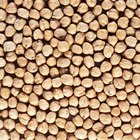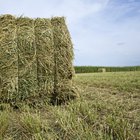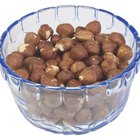When the fall garden needs a flourish to close out the gardening year, spider mums (Dendranthema x grandiflorum, Chrysanthemum moriflorium) answer the call in spectacular fashion. Bursting with thin, tubular petals, their flowers evoke fireworks in shades of white, yellow, green, lavender or bronze. Unless these plants are grown with lots of tender loving care, however, their show may be more fizzle than flash.
From Sun to Shade
Until they form flower buds, spider mums need at least six hours of sun each day. Once the buds develop and flower, however, they're better off in partial shade.
The solution is to plant them in a sunny spot in spring and move them to a partially shaded when they begin to bloom. As shallow-rooted plants, they transplant easily and reward the move with a much longer flower display.
Picking Your Spot
The happiest spider mums grow in wind-sheltered spots, such as those along garden walls or building foundations with southern or southeastern exposure.
The Perfect Soil
Spider mums need well-draining soil
Organic, well-aged compost improves clay soil drainage and supplies nutrients as it breaks down. Work a 2- to 3-inch layer into the top 6 to 8 inches of the planting bed before planting the mums.
Fertilizing for Flowers
If the soil is organically rich, working about 13 tablespoons -- 6 1/2 ounces -- of granulated, 5-10-5 fertilizer into each 10 square feet before planting supplies spider mums' needs for the growing season.
Mums in less fertile soil benefit from a second, early-August application. Spread 4 tablespoons of the granules evenly in a 2-foot circle around the base of each plant and water it in.
Watering Frequency
In spring, spider mums need 1 inch of rain or supplemental water each week. This amounts to about 6 gallons per 10 square feet of soil. Their watering requirements grow along with them; gradually increase the amount during the summer until they're getting two to three times that amount when they begin flowering in the fall.
Pinching Back and Disbudding
The secrets to growing dense spider mums with enormous blooms lie in pinching back and disbudding. Begin pinching when they're 6 inches tall, snapping off to 1 inch of each growing shoot between your thumb and index finger.
When the side branches appearing where you pinched become 6 inches long, repeat the process. Continue pinching back with every 6 inches of new growth until three months before the spider mum varieties normally bloom.
Disbudding means removing all but five or six of a the spider mums' most vigorous stems after their buds have formed. The extra energy flowing to those stems produces show-stopping flowers.
Winter Protection
Although spider mums are considered perennial in U.S. Department of Agriculture plant hardiness zones 5 through 9, they may struggle to survive winter where the soil frequently freezes and thaws.
To protect them, cut their stems back to 10 inches from the soil's surface after the first fall frost, and surround their bases with an 8-inch layer of soil. When the layer's surface freezes , cover it with a loose, 2- to 4-inch layer of straw or pine branches. Leave the soil and mulch in place until after the last spring frost.
Related Articles

How to Take Care of Raspberry Bushes

How to Make a Nosegay

What Makes Strawberries Taste Sour?
How Long Is it Safe to Keep Frozen ...

How to Make Wedding Bouquets With ...

What Plant Do Caraway Seeds Come From?

What Causes Strawberries to Mold?

How to Know When Sprouted Garbanzo ...

Alfalfa Hay Nutrition Information

What Kinds of Nuts Don't Grow on Trees?

What Is White Squash?

Are Buckeyes & Chestnuts the Same?

How to Design a Crescent Floral ...

How to Make Indian Wedding Garlands

How to Decorate With Mums for a Fall ...

List of Wild Edible Plants & Berries in ...

How to Avoid Woodpeckers at a ...
Best Time to Visit Seattle
When Is Grapefruit Season in Florida?

When Are Red Delicious Apples Ripe?
References
Writer Bio
Passionate for travel and the well-written word, Judy Wolfe is a professional writer with a Bachelor of Arts in English literature from Cal Poly Pomona and a certificate in advanced floral design. Her thousands of published articles cover topics from travel and gardening to pet care and technology.